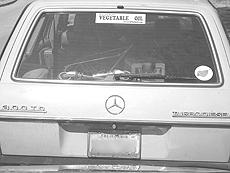Karina Gonzalez
The Associated Students Organization (ASO) has been especially vocal both on and off campus, in their recent campaign to reduce student debt.
Among the latest demonstrations was a giant tombstone in memory of expensive textbooks that became prematurely obsolete, and a blow-up ball and chain, which represented students being “shackled by debt.”
Also notable was their annual trip to Washington D.C. to lobby congress on various issues affecting today’s community college students. This year’s focus, according to ASO President Abraham White, was lowering the interest rates on student loans and increasing federal financial aid.
“Even at Pierce,” White explained, “students face a lot of debt, just with textbooks, gas, cost of living… Community college is setting a lot of students back. In addition to that, students are going to be transferring down the line.”
“[Textbooks are] the main cost of education in community college,” added Lara Kalaidjian, ASO Public Welfare Committee Chair. “You end up paying more for textbooks than you do for tuition.”
During this year’s trip, Kalaidjian and ASO Social Cultural Chair Tessa Moss had an opportunity to meet with George and Laura Bush’s education secretaries. The secretaries made it very clear, however, that the president was not in support of reducing student loan interest rates, but rather prefers increasing federal financial aid in the form of Pell Grants.
The problem with those, Moss explained, is called loan sensitivity-how much money students get is based on the tuition cost of the college they’re attending. But because textbook costs are not factored in, she continued, federal aid given to community college students is usually insufficient.
Despite the Bush administration’s opposition to lowering student loan interest rates, ASO has not given up hope. In the “shackled by debt” demonstration last week, they took down students’ information and snapped their pictures in front of the giant ball and chain to send state representatives in protest of high rates.
“The interest rates that we’re paying on our student loans is the highest percentage of any loan you can take,” said Moss.
“The reason that banks had set the student loan interest rates so high,” she continued, “is because they thought that student loans would be the hardest to get paid back. And actually, the facts have shown that student loans are the only loans that are almost always being fully paid off.”
Moss and Kalaidjian were especially adamant about a particular aspect of the interest rate issue. Evidently, it had become a common practice among some higher interest lenders to pay off universities in order to be placed on lists recommended to students in need of loans.
“Students trusted schools with acting in their best interest, but actually, the lenders were paying the school money to be on their preferred list. In reality, it’s this huge problem with students going way into debt. And that’s preventing a lot of higher education among students; because they can’t afford it,” said Kalaidjian.
Another ongoing concern of the ASO’s has been Senate Bill 832. Recently, ASO has been working with CALPIRG, a student advocacy group, on the matter.
According to Kalaidjian, there was disclosure bill similar to SB 832 that passed in Connecticut, requiring that publishers reveal the price of a book to a professor when they make their sales pitch. In addition, SB 832 would have them disclose information regarding merchandise bundled with the book as well as future edition changes.
“Oftentimes, a representative… will claim they don’t know the price, or, ‘Oh, I’m sure it’s not more than this much,'” Kalaidjian explained.
“There’s corruption going on as far as big publishing companies monopolizing the market, coming out with new editions-they do everything in their power to stifle the used book market,” she continued, with a sigh. “But our own student government has done so much work on the issue, that this fall we will probably have more used books on our shelves.

Tennis coach Rajeev Datt converted his 300 Turbo Diesel Mercedes-Benz to biodiesel. Since the conversion, Datt estimates that he has saved between $3,000 and $4,000 on traditional gas (Chrissy Williams)
